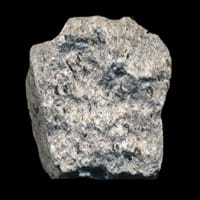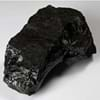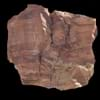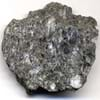Definition
Coal is a combustible black or brownish-black sedimentary rock usually occurring in rock strata in layers called coal beds
Porphyry is a reddish-brown to purple igneous rock containing large phenocrysts of various minerals embedded in a fine-grained matrix
Discoverer
John Peter Salley
Unknown
Etymology
From the Old English term col, which has meant mineral of fossilized carbon since the 13th century
From Old French porfire, from Italian porfiro and in some cases directly from Latin porphyrites
Class
Sedimentary Rocks
Igneous Rocks
Sub-Class
Durable Rock, Soft Rock
Durable Rock, Hard Rock
Group
Not Applicable
Plutonic
Other Categories
Coarse Grained Rock, Fine Grained Rock, Medium Grained Rock, Opaque Rock
Fine Grained Rock, Opaque Rock
Texture
Amorphous, Glassy
Porphyritic
Color
Black, Brown, Dark Brown, Grey, Light to Dark Grey
Black, Brown, Colourless, Green, Grey, Red, Rust, White
Durability
Durable
Durable
Appearance
Veined or Pebbled
Dull
Interior Uses
Not Yet Used
Decorative Aggregates, Interior Decoration
Exterior Uses
Not Yet Used
Garden Decoration, Paving Stone
Other Architectural Uses
Not Yet Used
Curbing
Construction Industry
Cement Manufacture, for Road Aggregate, Making natural cement, Steel Production
Construction Aggregate
Medical Industry
Not Yet Used
Not Yet Used
Antiquity Uses
Artifacts
Artifacts, Monuments, Sculpture
Commercial Uses
Alumina Refineries, Electricity Generation, Liquid Fuel, Manufacture of Soap, Solvents, Dyes, Plastics and Fibres, Paper Industry
Creating Artwork, Gemstone, Jewelry
Types
Peat, Lignite, Sub-Bituminous Coal, Bituminous Coal, Anthracite, Graphite
Rhomb Porphyry
Features
Helps in production of Heat and Electricity, Used as fossil fuel
Generally rough to touch, Is one of the oldest rock, Surfaces are often shiny
Archaeological Significance
Monuments
Not Yet Used
Used
Famous Monuments
Not Applicable
Data Not Available
Sculpture
Not Yet Used
Used
Famous Sculptures
Not Applicable
Data Not Available
Pictographs
Not Used
Not Used
Petroglyphs
Not Used
Not Used
Figurines
Not Yet Used
Used
Formation
Coal forms from the accumulation of plant debris in a swamp environment which is buried by sediments such as mud or sand and then compacted to form coal.
Porphyry is formed in two stages: the magma cools slowly deep within the crust or the magma is cools rapidly as it erupts from a volcano, creating small grains that are usually invisible to naked eye.
Mineral Content
Analcime, Apatite, Barite, Calcite, Chalcopyrite, Chlorite, Chromite, Clausthalite, Clay Minerals, Crandallite Group, Dolomite, Feldspar, Galena, Gypsum, Marcasite, Muscovite or Illite, Pyrite, Quartz, Siderite, Sphalerite, Zircon
Biotite, Chert, Feldspar, Garnet, Graphite, Quartz, Silica
Compound Content
Carbon, Hydrogen, Nitrogen, Oxygen, Sulphur
Aluminium Oxide, CaO, Iron(III) Oxide, Potassium Oxide, MgO, Sodium Oxide, Silicon Dioxide, Titanium Dioxide
Types of Metamorphism
Burial Metamorphism, Cataclastic Metamorphism, Regional Metamorphism
Burial Metamorphism, Cataclastic Metamorphism, Contact Metamorphism, Hydrothermal Metamorphism, Impact Metamorphism, Regional Metamorphism
Types of Weathering
Not Applicable
Biological Weathering, Chemical Weathering, Not Registered
Types of Erosion
Not Applicable
Chemical Erosion, Coastal Erosion, Glacier Erosion
Grain Size
Medium to Fine Coarse Grained
Fine Grained
Fracture
Conchoidal
Irregular
Porosity
Less Porous
Less Porous
Luster
Dull to Vitreous to Submetallic
Dull
Cleavage
Non-Existent
Imperfect
Toughness
Not Available
1.7
Specific Gravity
1.1-1.4
2.5-4
Transparency
Opaque
Translucent to Opaque
Density
1100-1400 g/cm3
2.5-2.52 g/cm3
Specific Heat Capacity
Not Available
Resistance
Heat Resistant
Heat Resistant, Impact Resistant
Deposits in Eastern Continents
Asia
Bangladesh, Burma, Cambodia, China, India, Indonesia, Kazakhstan, Malaysia, Mongolia, Pakistan, Turkey, Vietnam
China, Kazakhstan, South Korea, Thailand, Turkey, Vietnam
Africa
Botswana, Kenya, Morocco, Mozambique, South Africa, Tanzania
Egypt, Ethiopia, Ghana, South Africa
Europe
Belgium, Bulgaria, England, France, Germany, Greece, Hungary, Kosovo, Netherlands, Norway, Poland, Romania, Serbia, Slovakia, Slovenia, The Czech Republic, Ukraine, United Kingdom
Finland, France, Germany, Great Britain, Hungary, Iceland, Ireland, Italy, Netherlands, Norway, Romania, Sweden, Switzerland
Others
Not Yet Found
Greenland
Deposits in Western Continents
North America
Canada, Mexico, USA
Canada, Cuba, Jamaica, USA
South America
Brazil, Chile, Colombia, Venezuela
Bolivia, Brazil, Colombia, Ecuador, Paraguay
Deposits in Oceania Continent
Australia
New South Wales, Queensland, Victoria
New South Wales, New Zealand, Western Australia
All about Coal and Porphyry Properties
Know all about Coal and Porphyry properties here. All properties of rocks are important as they define the type of rock and its application. Coal belongs to Sedimentary Rocks while Porphyry belongs to Igneous Rocks.Texture of Coal is Amorphous, Glassy whereas that of Porphyry is Porphyritic. Coal appears Veined or Pebbled and Porphyry appears Dull. The luster of Coal is dull to vitreous to submetallic while that of Porphyry is dull. Coal is available in black, brown, dark brown, grey, light to dark grey colors whereas Porphyry is available in black, brown, colourless, green, grey, red, rust, white colors. The commercial uses of Coal are alumina refineries, electricity generation, liquid fuel, manufacture of soap, solvents, dyes, plastics and fibres, paper industry and that of Porphyry are creating artwork, gemstone, jewelry.










